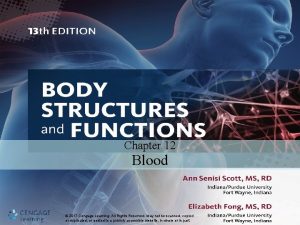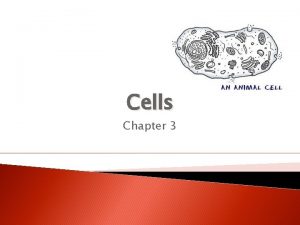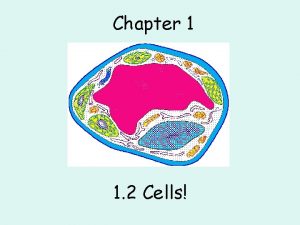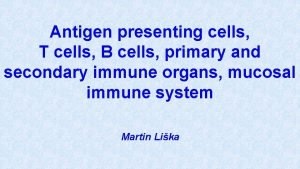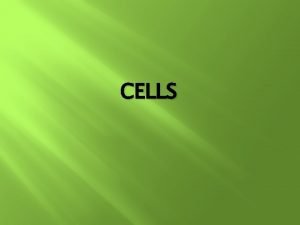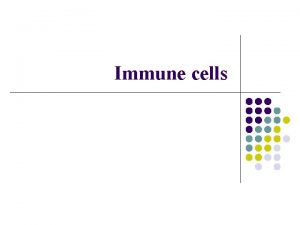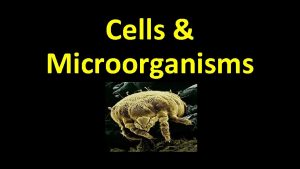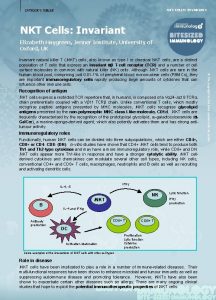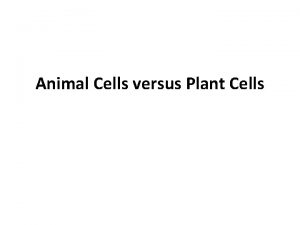Chapter 3 Cells 2017 Cengage 2017 Learning Cengage





























- Slides: 29

Chapter 3 Cells © 2017 Cengage © 2017 Learning. Cengage All. Learning. Rights Reserved. All Rights. May Reserved. not be scanned, May not be copied scanned, copied or duplicated, or or duplicated, posted toor a publicly posted to accessible a publiclywebsite, accessible in whole website, or in in part. whole or in part.

Cells • The cell is the basic unit of structure and function of all living things • Cell or plasma membrane • Nucleus © 2017 Cengage Learning. All Rights Reserved. May not be scanned, copied or duplicated, or posted to a publicly accessible website, in whole or in part.

Nucleus • Most important organelle within the cell • Function – Control the activities of the cell and facilitate cell division • DNA and chromatin • Chromosomes © 2017 Cengage Learning. All Rights Reserved. May not be scanned, copied or duplicated, or posted to a publicly accessible website, in whole or in part.

Functions of Organelles (1 of 7) • Nuclear membrane or nuclear envelope – Regulates transport of substances into and out of the cell • Nucleoplasm – A clear, semi-liquid medium that fills the spaces around the chromatin and the nucleoli © 2017 Cengage Learning. All Rights Reserved. May not be scanned, copied or duplicated, or posted to a publicly accessible website, in whole or in part.

Functions of Organelles (2 of 7) • Nucleolus – Reservoir for RNA • Ribosomes – Serve as site for protein synthesis © 2017 Cengage Learning. All Rights Reserved. May not be scanned, copied or duplicated, or posted to a publicly accessible website, in whole or in part.

Functions of Organelles (3 of 7) • Cytoplasm – Provides an organized watery environment where life functions take place via the activities of the organelles, which reside there • Centrosome – Contains two centrioles that are functional during animal cell division © 2017 Cengage Learning. All Rights Reserved. May not be scanned, copied or duplicated, or posted to a publicly accessible website, in whole or in part.

Functions of Organelles (4 of 7) • Endoplasmic reticulum – Provides passage for the transport of substances in the cytoplasm • Mitochondria – Serve as sites of cellular respiration and energy production – Store ATP © 2017 Cengage Learning. All Rights Reserved. May not be scanned, copied or duplicated, or posted to a publicly accessible website, in whole or in part.

Functions of Organelles (5 of 7) • Golgi apparatus – Manufactures carbohydrates and packages secretions for discharge from the cell • Lysosomes – Serve as center for cellular digestion © 2017 Cengage Learning. All Rights Reserved. May not be scanned, copied or duplicated, or posted to a publicly accessible website, in whole or in part.

Functions of Organelles (6 of 7) • Perioxisomes – Enzymes that oxidize cell substances • Cytoskeleton – Forms internal framework © 2017 Cengage Learning. All Rights Reserved. May not be scanned, copied or duplicated, or posted to a publicly accessible website, in whole or in part.

Functions of Organelles (7 of 7) • Pinocytic vesicles – Provide mechanism by which large molecules can enter the cell • Cilia and flagella – Create movement © 2017 Cengage Learning. All Rights Reserved. May not be scanned, copied or duplicated, or posted to a publicly accessible website, in whole or in part.

Cellular Metabolism • Chemical reactions occur within the cells • Energy supplied by ATP • ATP created from CHO, proteins, and fats that we eat © 2017 Cengage Learning. All Rights Reserved. May not be scanned, copied or duplicated, or posted to a publicly accessible website, in whole or in part.

Cell Division • Meiosis – Involves reproduction • Mitosis – Involves growth and maintenance of cells © 2017 Cengage Learning. All Rights Reserved. May not be scanned, copied or duplicated, or posted to a publicly accessible website, in whole or in part.

Meiosis • Process of cell division of the sex cell or gamete • Ovum and spermatozoa reduce chromosomes from 46 to 23 • Fertilization • Zygote is formed from two sex cells to obtain full set of 46 chromosomes © 2017 Cengage Learning. All Rights Reserved. May not be scanned, copied or duplicated, or posted to a publicly accessible website, in whole or in part.

Mitosis • Cell division – Division of the nucleus – Division of the cytoplasm © 2017 Cengage Learning. All Rights Reserved. May not be scanned, copied or duplicated, or posted to a publicly accessible website, in whole or in part.

Mitosis Stages (1 of 2) • Phase I – Interphase (resting stage) • Phase II – Prophase • Phase III – Metaphase © 2017 Cengage Learning. All Rights Reserved. May not be scanned, copied or duplicated, or posted to a publicly accessible website, in whole or in part.

Mitosis Stages (2 of 2) • Phase IV – Anaphase • Phase V – Telophase • Cycle back to interphase © 2017 Cengage Learning. All Rights Reserved. May not be scanned, copied or duplicated, or posted to a publicly accessible website, in whole or in part.

Cell Death • Necrosis • Apoptosis © 2017 Cengage Learning. All Rights Reserved. May not be scanned, copied or duplicated, or posted to a publicly accessible website, in whole or in part.

Stem Cells • • Embryonic stem cells Adult stem cells Umbilical cord blood stem cells Induced pluripotent stem cells © 2017 Cengage Learning. All Rights Reserved. May not be scanned, copied or duplicated, or posted to a publicly accessible website, in whole or in part.

Protein Synthesis • Cells produce proteins • DNA • RNA © 2017 Cengage Learning. All Rights Reserved. May not be scanned, copied or duplicated, or posted to a publicly accessible website, in whole or in part.

Movement of Materials Across Cell Membranes • Passive transport – Does not require an energy source • Active transport – Requires an energy source © 2017 Cengage Learning. All Rights Reserved. May not be scanned, copied or duplicated, or posted to a publicly accessible website, in whole or in part.

Passive Transport • Diffusion • Osmosis • Filtration © 2017 Cengage Learning. All Rights Reserved. May not be scanned, copied or duplicated, or posted to a publicly accessible website, in whole or in part.

Active Transport • Phagocytosis • Pinocytosis © 2017 Cengage Learning. All Rights Reserved. May not be scanned, copied or duplicated, or posted to a publicly accessible website, in whole or in part.

Figure 3 -9 The active transport of molecules from an area of lesser concentration to an area of greater concentration, according to one theoretical model. Active transport is the transportation of materials against a concentration gradient or in opposition to other factors that would normally keep the materials from entering the cell. © 2017 Cengage Learning. All Rights Reserved. May not be scanned, copied or duplicated, or posted to a publicly accessible website, in whole or in part.

Specialization • Nerve cells – Specialize in response • Red blood cells – Specialize in oxygen transport • May lose some functions, such as reproduction • Interdependence among cells © 2017 Cengage Learning. All Rights Reserved. May not be scanned, copied or duplicated, or posted to a publicly accessible website, in whole or in part.

Aging (1 of 2) • Aging is a phase of normal development • Older person may have 30% fewer cells • Cells may change in ability to perform specialized tasks © 2017 Cengage Learning. All Rights Reserved. May not be scanned, copied or duplicated, or posted to a publicly accessible website, in whole or in part.

Aging (2 of 2) • Physiologic changes are universal and progressive • Aging is not a disease © 2017 Cengage Learning. All Rights Reserved. May not be scanned, copied or duplicated, or posted to a publicly accessible website, in whole or in part.

Disorders of Cell Structure (1 of 2) • Atrophy • Hyperplasia © 2017 Cengage Learning. All Rights Reserved. May not be scanned, copied or duplicated, or posted to a publicly accessible website, in whole or in part.

Disorders of Cell Structure (2 of 2) • Metaplasia • Dysplasia • Neoplasia © 2017 Cengage Learning. All Rights Reserved. May not be scanned, copied or duplicated, or posted to a publicly accessible website, in whole or in part.

Tumor • When cell division does not occur in the usual pattern • Also called neoplasms • Benign tumors • Malignant tumors © 2017 Cengage Learning. All Rights Reserved. May not be scanned, copied or duplicated, or posted to a publicly accessible website, in whole or in part.
 Chapter 8 cellular reproduction cells from cells
Chapter 8 cellular reproduction cells from cells Chapter 13 medical math assignment sheet
Chapter 13 medical math assignment sheet Chapter 7:10 respiratory system
Chapter 7:10 respiratory system Paranasal sinus development
Paranasal sinus development Transport maximum
Transport maximum Parafollicular cells vs follicular cells
Parafollicular cells vs follicular cells Haploid vs diploid venn diagram
Haploid vs diploid venn diagram Why dna is more stable than rna
Why dna is more stable than rna Red blood cells and white blood cells difference
Red blood cells and white blood cells difference Prokaryotic cells
Prokaryotic cells What is an organelle
What is an organelle Prokaryotic vs eukaryotic cells venn diagram
Prokaryotic vs eukaryotic cells venn diagram Why did robert hooke name cells “cells”?
Why did robert hooke name cells “cells”? Masses of cells form and steal nutrients from healthy cells
Masses of cells form and steal nutrients from healthy cells Pseudostratified vs simple columnar
Pseudostratified vs simple columnar Cuál es la diferencia entre la célula animal y vegetal
Cuál es la diferencia entre la célula animal y vegetal Is a red blood cell prokaryotic or eukaryotic
Is a red blood cell prokaryotic or eukaryotic Cell substance
Cell substance Chapter 6:2 interpreting word parts
Chapter 6:2 interpreting word parts Cengage learning heart diagram
Cengage learning heart diagram Cengage learning heart diagram
Cengage learning heart diagram South-western cengage learning
South-western cengage learning 2009 delmar cengage learning
2009 delmar cengage learning Cengage learning heart diagram
Cengage learning heart diagram Medical terminology chapter 1 answer key
Medical terminology chapter 1 answer key Cengage learning australia
Cengage learning australia 2009 delmar cengage learning
2009 delmar cengage learning Cengage learning
Cengage learning Cengage learning
Cengage learning Wadsworth cengage learning
Wadsworth cengage learning

































